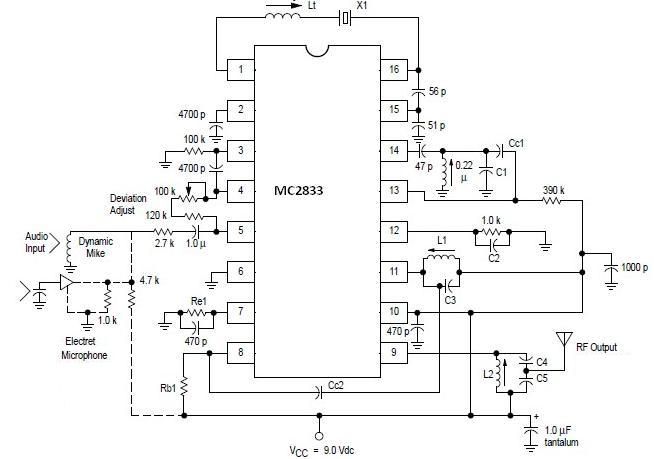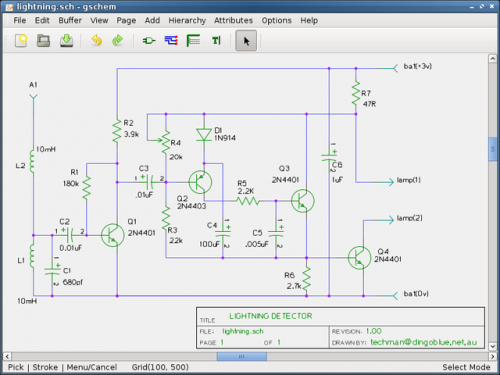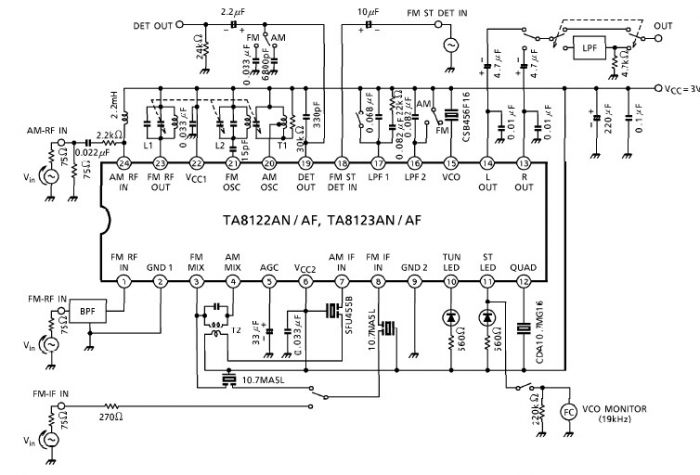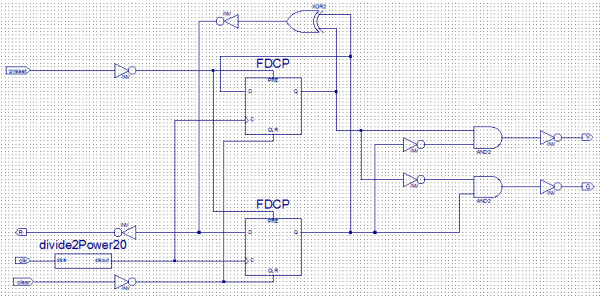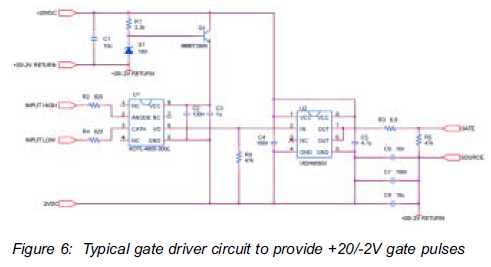
RCA CT-100 Color Television Design
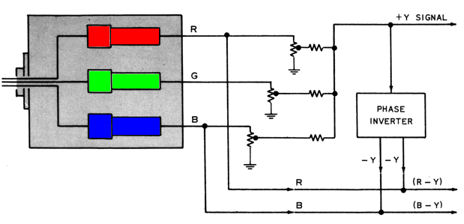
If you have not already read the CT-100 restoration article, it is recommended to start there. It chronicles the discovery of a CT-100 and its restoration to working condition. This article discusses the internal components of the CT-100. After highlighting some hardware features, the article explains how the CT-100 decodes color within the context of the NTSC standard. The article concludes with a library of important CT-100 documents, including the factory service manual and the NTSC specification. The CT-100 television is a complex device that utilizes 37 tubes, including the 15GP22 tri-color picture tube. A diagram from the RCA service manual illustrates the layout of tubes and controls. The accompanying photo shows the chassis during restoration. A diagram of the CT-100's front and side controls is also provided. It may be surprising to learn that the CT-100 contains solid-state components. Specifically, it incorporates five solid-state components: two selenium rectifiers for the low-voltage power supply and three crystal diodes for the RF mixer, audio detector, and video detector. In contrast, televisions from the 1940s relied solely on tubes for these functions. If the CT-100 had followed that design, its tube count would have exceeded forty. The 15GP22 picture tube is both rare and complex. Few were produced originally, and many of the existing units have lost vacuum, rendering them nonfunctional. Substituting any other tube would require modifications that compromise the authenticity of the CT-100. The 15GP22 had a short service life, and as of November 2010, there is no commercial process available for rebuilding it. The data sheet indicates that in many picture tubes, the envelope is a single glass piece, similar to a light bulb. However, the 15GP22 features a separate glass face and body bonded to a metal flange, or ultor ring. The beams from the CRT's electron guns pass through holes in the shadow mask and strike phosphor dots on the glass plate, illuminating them. High precision was necessary to manufacture these components and ensure proper alignment during assembly. Due to the differing expansion coefficients of metal and glass, the manufacturing process required careful handling of heating and cooling cycles to prevent damage to the glass phosphor-dot plate held within its metal frame. Detailed accounts of the 15GP22 manufacturing process can be found in the article "Improvements in the RCA Three-Beam Shadow-Mask Color Kinescope," published in the January 1954 issue of I. R. E. Proceedings. The two previously mentioned photos are included in that article. Many picture tubes can be easily rebuilt by replacing the electron gun assembly; however, this is not the case for the 15GP22, making every functional unit increasingly valuable due to the unavailability of rebuilding options. The vulnerability of the tube lies in the double glass-to-metal bond between the flange rings and glass envelope parts. If this bond fails, air can leak into the tube, causing it to become nonfunctional. Additionally, the two metal flange parts are machine-welded around their perimeters, which also poses a risk for leaks. For over a decade, dedicated television restorers, including John Folsom and Bob Galanter, worked to develop a rebuilding process for the 15GP22 tube. In late 2009, the team announced their first successful rebuild, marking a significant achievement. However, in early 2010, they encountered setbacks when two candidate tubes failed during trials. Each tube experienced different issues; one lost vacuum after attempts to seal it, while another suffered a cracked stem during the heating process. Consequently, the project was suspended pending further research. During the same period, Jerome Halphen in Paris collaborated with the French company RACS, bringing a candidate tube for rebuilding. After applying frit glass to a leaky area, RACS successfully rebuilt the tube, which was demonstrated at the 2010 Early Television Foundation convention. While this was promising, the RACS process remained experimental as of November 2010. Another notable feature of the CT-100 is its ability to receive UHF (ultra-high frequency) broadcasts in addition to VHF. Although UHF broadcasting was not widespread in 1954, it was available. The CT-100's turret-style tuner has sixteen positions, each of which can be configured to receive either a VHF channel (2-13) or a UHF channel (14-83). When the CT-100 was new, dealers would set it up to receive local channels by inserting a "channel strip" for each desired frequency into the tuner. A drawing from RCA patent 2,643,361 illustrates a tuner of this type. The channel strips can be easily inserted and removed from the rotating turret assembly. The factory channel indicator shows the standard twelve VHF channels plus four UHF positions. The CT-100 was configured for VHF channels 2-13 and UHF channels 14, 16, and 18. Additional information about this indicator can be found in the restoration article. Many early sets, such as the National TV-7W, had tuners that selected fewer than twelve VHF channels. Although the VHF band encompasses channels 2-13, the FCC limited the number of stations in any given area to a maximum of eight, imposing further restrictions on adjacent channels to reduce interference. In practice, major US cities like New York might have six or seven VHF channels, while smaller towns had fewer. UHF broadcasting was even more limited, as the market was underdeveloped. In 1954, a major city might have a couple of UHF stations, but many regions had none. All-channel UHF tuners were rare in the 1950s, becoming common only after the FCC mandated their inclusion in every new television set in 1965. The CT-100's sixteen-channel tuner was adequate for its time, but relocating to a new town could necessitate dealer adjustments to the tuner for different channels. A detailed article titled "A VHF-UHF Television Turret Tuner," written by RCA engineers, analyzes all of the tuner circuits and presents the results of extensive field testing. The CT-100 includes a unique component called the "field neutralization coil," which is not commonly found in other televisions. This simple coil encircles the front of the picture tube and is adjusted via a control on the back of the low-voltage power supply cabinet. Initially, it may be mistaken for a built-in manual degausser. Modern color televisions often feature an automatic degausser, which briefly energizes each time the TV is turned on to counteract changes in the Earth's magnetic field. The field neutralization coil, however, is used to adjust purity around the CRT edges during setup routines. More information about purity adjustments and the field neutralization coil can be found in the restoration article. DC restoration is critical for maintaining correct black levels in scenes with high contrast. Higher-quality black-and-white televisions, like the DuMont RA-103, incorporate a separate DC restoration circuit, while cheaper models do not. In televisions lacking DC restoration, adjusting brightness and contrast for optimal black levels in bright scenes may result in overly dark images in darker scenes with high contrast. The CT-100 employs a separate stage of DC restoration for the Red, Green, and Blue signals produced in the TV's color matrix/output section. Later color televisions, such as the 1961 CTC-11, do not include this stage. Several sections of the CT-100 are conventional for mid-1950s technology and will not be elaborated upon here, including the low and high voltage power supplies, RF and IF amplifiers, and horizontal and vertical sweep circuits. Details regarding these sections can be found in the technical library, particularly in the RCA service manual and Grob's description of the CT-100. Some may wonder if the CT-100 resembles a hastily assembled prototype. The answer is negative. The CTC-2 chassis evolved from earlier proven designs, such as the widely imitated 630TS. A clear evolution can also be traced to subsequent RCA color chassis, including the CTC-3, CTC-4, and others. In some respects, later models like the CTC-11 simplified the design for cost-effectiveness and ease of service, omitting features such as DC restoration and utilizing a wafer tuner instead of a turret. This economization is understandable given that the cost of a color television was comparable to that of a new car. Reports indicate that no manufacturer profited from color television until the 1960s, when color programming gained popularity. The bulk of this article focuses on the heart of the CT-100, its color decoder or "demodulator." A complete description of the color circuits is beyond the scope of this summary; references in the library section provide thorough details. Since the CT-100 was introduced alongside the NTSC color system, a review of both will be undertaken, starting with the origins of the NTSC standard and an earlier system that did not succeed. In the late 1940s, television companies proposed various color schemes, utilizing mirrors, lenses, and even triple picture tubes. CBS was the first to develop a system, known as "field sequential," which employed a spinning disk with red, green, and blue filters in front of a black-and-white picture tube. This system underwent a brief national trial in 1951. The CBS scheme exhibited characteristics reminiscent of Rube Goldberg inventions, as spinning disks are prone to wear and malfunction. If the disk speed was not perfectly synchronized, color quality would deteriorate. CBS secured numerous patents related to this system. A diagram illustrating this system is included. While the CBS system could produce appealing color under optimal conditions, it posed significant incompatibility issues for the tens of millions of black-and-white television owners who could not view color broadcasts without purchasing or constructing a separate device. Furthermore, the CBS system had lower resolution, displaying only 405 lines of video compared to the standard 525 lines. It also experienced problems with flicker and the representation of fast-moving objects.If you haven`t already read my CT-100 restoration article, I suggest that you start there. It chronicles how I found a CT-100 and restored it to working condition. This article discusses what`s under the hood. After noting some hardware highlights, we`ll discuss how the CT-100 decodes color, framing that in the context of the NTSC standard. The a rticle concludes with a library of key CT-100 documents, including the factory service manual and the NTSC specification. The CT-100 television is a complicated critter. It uses 37 tubes, including the 15GP22 tri-color picture tube. This diagram from the RCA service manual shows the layout of tubes and controls. The photo shows my chassis during restoration. Here`s a diagram of the CT-100`s front and side controls. The previous chassis layout diagram shows additional service adjusters on the top and rear of the chassis.
You might be a little surprised to hear that the CT-100 contains solid-state components. It actually uses five of them: two selenium rectifiers for the low-voltage power supply and three crystal diodes for the RF mixer, audio detector, and video detector. My 1940s televisions use tubes for all of those functions. Had the CT-100 followed suit, its tube-count would have topped forty! The CT-100`s 15GP22 picture tube is both rare and complex. Few were produced in the first place, and of the few survivors, many have lost vacuum, relegating them to the netherworld of duds.
It is not possible to substitute any other tube without making modifications that would destroy the authenticity of the CT-100. The 15GP22 had a short service life, and at this writing (November, 2010) nobody in the world has a commercial process for rebuilding it.
Here`s a page from its data sheet : In many picture tubes, the envelope is a single glass piece, like a light bulb. In the 15GP22, the face and the body are separate glass pieces bonded to a metal flange, or ultor ring.
This picture shows the two glass parts with metal rings attached: Beams from the CRT`s electron guns pass through holes in the shadow mask and strike phosphor dots on the glass plate, illuminating them. High precision was needed to fabricate these parts and mount them in alignment. Metal and glass have different expansion coefficients, and the manufacture process took special care with heating and cooling cycles to avoid (among other things) breaking the glass phospor-dot plate held in its metal frame.
Many details of the 15GP22 manufacturing process are given in the article Improvements in the RCA Three-Beam Shadow-Mask Color Kinescope, from the January, 1954 issue of I. R. E. Proceedings. The two previous photos appear in that article. Many picture tubes can easily be rebuilt by substituting a new electron gun assembly. This is not true for the 15GP22, and the unavailability of rebuilding makes every good 15GP22 even more valuable.
The Achilles` heel of the tube is the double glass-to-metal bond between the flange rings and glass envelope parts. If that bond fails anywhere, air leaks into the tube and ruins it. Further, the two metal flange parts are machine-welded together around their perimeters, and the weld is another potential source of leaks.
For more than ten years, dedicated TV restorers including John Folsom and Bob Galanter worked to develop a process for rebuilding a 15GP22 tube. Late in 2009, the team announced their first successful rebuild ”a real achievement. In early 2010, they had a setback when two candidate tubes failed during a rebuild trial. Each tube failed in a different way. One lost vacuum after their best attempts to seal it. Another suffered a cracked stem in the oven. The team suspended their project pending further research. Also during 2009-2010, Jerome Halphen in Paris consulted with the French company RACS and brought them a candidate tube for rebuilding.
After coating a leaky area with frit glass, RACS rebuilt the tube and it was demonstrated at the 2010 Early Television Foundation convention. Although very encouraging, the RACS process is still in the experimental stage as of November, 2010. Another little surprise is that the CT-100 can receive UHF (ultra-high frequency) as well as VHF broadcasts.
UHF broadcasting was not widespread in 1954, but it did exist. The CT-100`s turret-style tuner has sixteen positions. Each position could be set to receive a VHF channel (2-13) or UHF channel (14-83). For a new CT-100, the dealer would set it up to receive the channels in that locality. Mechanically, this was done by inserting a "channel strip" for each desired channel in the tuner. A drawing from RCA patent 2, 643, 361 shows a tuner of this general type. The strips (Fig. 3) can be popped in and out of the rotating turret assembly. The photo shows strips in the CT-100 tuner. The channel indicator came from the factory showing the standard twelve VHF channels plus four UHF positions. My CT-100 was set up for VHF channels 2-13 plus UHF channels 14, 16, and 18. My restoration article has more about this indicator. Many early sets such as my National TV-7W had tuners that selected fewer than twelve VHF channels. Although the VHF band included channels 2-13, the FCC limited the number of stations in any given locale to a maximum of eight.
It put further limits on adjacent channels to minimize interference. In practice, the biggest US cities such as New York might have six or seven VHF channels; smaller cities and towns had fewer. UHF broadcasting was even more limited because that market was poorly developed. In 1954, a major city might have a couple of UHF stations, but vast areas of the USA had none. All-channel UHF tuners were almost unheard-of in the 1950s. They did not become common until 1965, when the FCC forced manufacturers to put them in every new TV.
With sixteen possible channels, the CT-100 tuner was adequate for 1954. Its only drawback was that if you moved to a new town, you might need to have the dealer adjust the tuner to different channels. In the library below, you`ll find a detailed article, A VHF-UHF Television Turret Tuner. Written by RCA engineers, it analyzes all of the tuner circuits and gives the results of extensive field testing.
The CT-100 has one gizmo, the "field neutralization coil, " that I haven`t seen on other TVs. It is a simple coil that goes around the front of the picture tube and is controlled by an adjuster on the back of the low-voltage power supply cabinet. At first glance, I mistook this for a built-in manual degausser. Newer color TVs have a built-in automatic degausser, also a simple coil around the CRT face, which briefly energizes each time you turn on the TV.
This lets you move the TV in your house without having to manually degauss the set to counteract the change of position within Earth`s magnetic field. The field neutralization coil is actually used to adjust purity around the CRT edges when you are going through setup routines.
You can read more about purity adjustments and the field neutralization coil in my restoration article. DC restoration affects the TV`s ability to maintain correct black levels in scenes with high contrast.
Better-quality black and white TVs like my DuMont RA-103 have a separate DC restoration circuit, but cheaper sets do not. In a TV without DC restoration, if you set the brightness and contrast for good black levels in bright scenes with high contrast, the overall picture may be too dark in darker scenes with high contrast.
The CT-100 has a separate stage of DC restoration for the Red, Green, and Blue signals produced in the TV`s color matrix/output section. Later color TVs such as my 1961 CTC-11 omit this stage. Several sections of the CT-100 are pretty conventional for the mid-1950s and will not be discussed here.
These include the power supplies (low and high voltage), RF and IF amplifiers, and horizontal and vertical sweep. You can find details about those sections in the technical library below, particularly the RCA service manual and Grob`s description of the CT-100.
Some people ask whether the CT-100 resembles a prototype, slapped together in a hurry. The answer is No. The CTC-2 chassis clearly evolved from earlier proven designs, such as the much-imitated 630TS. You can also trace a clear evolution from this to subsequent RCA color chassis: the CTC-3, CTC-4, and so forth. In some ways, a later chassis like my CTC-11 was a dumbing-down of this design, cheaper to build and simpler to service, with no DC restoration, three video IF stages rather than five, X-Y rather than I-Q demodulation, and a wafer tuner rather than a turret.
It`s hard to fault RCA for economizing when their color TV cost as much as a new car. I have heard that no manufacturer made money from color until well into the 1960s, when color programming became popular. The bulk of this article describes what you might call the heart of the CT-100, its color decoder, or "demodulator.
" I won`t try to describe the color circuits fully; the references in the library section do that. Since the CT-100 arrived at the same time as the new NTSC color system, we`ll review them together, beginning with the NTSC standard`s origin and an even earlier system that didn`t succeed. In the late 1940s, TV companies had proposed various schemes for color, using mirrors, lenses, and even triple picture tubes.
CBS was first off the drawing board with its "field sequential" system that used a spinning disk with red, green, and blue filters in front of a black and white picture tube. This system was given a brief national trial in 1951. The CBS scheme smacked a bit of Rube Goldberg. Spinning disks are subject to wear and breakdown, and if the disk speed was not perfectly synchronized, the color would degrade.
CBS obtained various patents relating to this system. Here`s one diagram: This system could produce nice color under optimum circumstances. I took this photo at the 2010 Early Television Foundation convention. It shows an RCA black and white TV similar to my T-100 using a CBS color converter. This adapter uses a magnifying lens and a separate control box that`s hard-wired into the TV`s circuitry. Incompatibility was a major drawback of the CBS system. Tens of millions of people who owned black and white TVs couldn`t view a program broadcast in color without buying or building a separate gizmo like this one.
Lower resolution was another problem. This system displayed only 405 lines of video rather than the standard 525 lines. It also had problems with flicker and portrayal of fast-moving objects. 🔗 External reference
You might be a little surprised to hear that the CT-100 contains solid-state components. It actually uses five of them: two selenium rectifiers for the low-voltage power supply and three crystal diodes for the RF mixer, audio detector, and video detector. My 1940s televisions use tubes for all of those functions. Had the CT-100 followed suit, its tube-count would have topped forty! The CT-100`s 15GP22 picture tube is both rare and complex. Few were produced in the first place, and of the few survivors, many have lost vacuum, relegating them to the netherworld of duds.
It is not possible to substitute any other tube without making modifications that would destroy the authenticity of the CT-100. The 15GP22 had a short service life, and at this writing (November, 2010) nobody in the world has a commercial process for rebuilding it.
Here`s a page from its data sheet : In many picture tubes, the envelope is a single glass piece, like a light bulb. In the 15GP22, the face and the body are separate glass pieces bonded to a metal flange, or ultor ring.
This picture shows the two glass parts with metal rings attached: Beams from the CRT`s electron guns pass through holes in the shadow mask and strike phosphor dots on the glass plate, illuminating them. High precision was needed to fabricate these parts and mount them in alignment. Metal and glass have different expansion coefficients, and the manufacture process took special care with heating and cooling cycles to avoid (among other things) breaking the glass phospor-dot plate held in its metal frame.
Many details of the 15GP22 manufacturing process are given in the article Improvements in the RCA Three-Beam Shadow-Mask Color Kinescope, from the January, 1954 issue of I. R. E. Proceedings. The two previous photos appear in that article. Many picture tubes can easily be rebuilt by substituting a new electron gun assembly. This is not true for the 15GP22, and the unavailability of rebuilding makes every good 15GP22 even more valuable.
The Achilles` heel of the tube is the double glass-to-metal bond between the flange rings and glass envelope parts. If that bond fails anywhere, air leaks into the tube and ruins it. Further, the two metal flange parts are machine-welded together around their perimeters, and the weld is another potential source of leaks.
For more than ten years, dedicated TV restorers including John Folsom and Bob Galanter worked to develop a process for rebuilding a 15GP22 tube. Late in 2009, the team announced their first successful rebuild ”a real achievement. In early 2010, they had a setback when two candidate tubes failed during a rebuild trial. Each tube failed in a different way. One lost vacuum after their best attempts to seal it. Another suffered a cracked stem in the oven. The team suspended their project pending further research. Also during 2009-2010, Jerome Halphen in Paris consulted with the French company RACS and brought them a candidate tube for rebuilding.
After coating a leaky area with frit glass, RACS rebuilt the tube and it was demonstrated at the 2010 Early Television Foundation convention. Although very encouraging, the RACS process is still in the experimental stage as of November, 2010. Another little surprise is that the CT-100 can receive UHF (ultra-high frequency) as well as VHF broadcasts.
UHF broadcasting was not widespread in 1954, but it did exist. The CT-100`s turret-style tuner has sixteen positions. Each position could be set to receive a VHF channel (2-13) or UHF channel (14-83). For a new CT-100, the dealer would set it up to receive the channels in that locality. Mechanically, this was done by inserting a "channel strip" for each desired channel in the tuner. A drawing from RCA patent 2, 643, 361 shows a tuner of this general type. The strips (Fig. 3) can be popped in and out of the rotating turret assembly. The photo shows strips in the CT-100 tuner. The channel indicator came from the factory showing the standard twelve VHF channels plus four UHF positions. My CT-100 was set up for VHF channels 2-13 plus UHF channels 14, 16, and 18. My restoration article has more about this indicator. Many early sets such as my National TV-7W had tuners that selected fewer than twelve VHF channels. Although the VHF band included channels 2-13, the FCC limited the number of stations in any given locale to a maximum of eight.
It put further limits on adjacent channels to minimize interference. In practice, the biggest US cities such as New York might have six or seven VHF channels; smaller cities and towns had fewer. UHF broadcasting was even more limited because that market was poorly developed. In 1954, a major city might have a couple of UHF stations, but vast areas of the USA had none. All-channel UHF tuners were almost unheard-of in the 1950s. They did not become common until 1965, when the FCC forced manufacturers to put them in every new TV.
With sixteen possible channels, the CT-100 tuner was adequate for 1954. Its only drawback was that if you moved to a new town, you might need to have the dealer adjust the tuner to different channels. In the library below, you`ll find a detailed article, A VHF-UHF Television Turret Tuner. Written by RCA engineers, it analyzes all of the tuner circuits and gives the results of extensive field testing.
The CT-100 has one gizmo, the "field neutralization coil, " that I haven`t seen on other TVs. It is a simple coil that goes around the front of the picture tube and is controlled by an adjuster on the back of the low-voltage power supply cabinet. At first glance, I mistook this for a built-in manual degausser. Newer color TVs have a built-in automatic degausser, also a simple coil around the CRT face, which briefly energizes each time you turn on the TV.
This lets you move the TV in your house without having to manually degauss the set to counteract the change of position within Earth`s magnetic field. The field neutralization coil is actually used to adjust purity around the CRT edges when you are going through setup routines.
You can read more about purity adjustments and the field neutralization coil in my restoration article. DC restoration affects the TV`s ability to maintain correct black levels in scenes with high contrast.
Better-quality black and white TVs like my DuMont RA-103 have a separate DC restoration circuit, but cheaper sets do not. In a TV without DC restoration, if you set the brightness and contrast for good black levels in bright scenes with high contrast, the overall picture may be too dark in darker scenes with high contrast.
The CT-100 has a separate stage of DC restoration for the Red, Green, and Blue signals produced in the TV`s color matrix/output section. Later color TVs such as my 1961 CTC-11 omit this stage. Several sections of the CT-100 are pretty conventional for the mid-1950s and will not be discussed here.
These include the power supplies (low and high voltage), RF and IF amplifiers, and horizontal and vertical sweep. You can find details about those sections in the technical library below, particularly the RCA service manual and Grob`s description of the CT-100.
Some people ask whether the CT-100 resembles a prototype, slapped together in a hurry. The answer is No. The CTC-2 chassis clearly evolved from earlier proven designs, such as the much-imitated 630TS. You can also trace a clear evolution from this to subsequent RCA color chassis: the CTC-3, CTC-4, and so forth. In some ways, a later chassis like my CTC-11 was a dumbing-down of this design, cheaper to build and simpler to service, with no DC restoration, three video IF stages rather than five, X-Y rather than I-Q demodulation, and a wafer tuner rather than a turret.
It`s hard to fault RCA for economizing when their color TV cost as much as a new car. I have heard that no manufacturer made money from color until well into the 1960s, when color programming became popular. The bulk of this article describes what you might call the heart of the CT-100, its color decoder, or "demodulator.
" I won`t try to describe the color circuits fully; the references in the library section do that. Since the CT-100 arrived at the same time as the new NTSC color system, we`ll review them together, beginning with the NTSC standard`s origin and an even earlier system that didn`t succeed. In the late 1940s, TV companies had proposed various schemes for color, using mirrors, lenses, and even triple picture tubes.
CBS was first off the drawing board with its "field sequential" system that used a spinning disk with red, green, and blue filters in front of a black and white picture tube. This system was given a brief national trial in 1951. The CBS scheme smacked a bit of Rube Goldberg. Spinning disks are subject to wear and breakdown, and if the disk speed was not perfectly synchronized, the color would degrade.
CBS obtained various patents relating to this system. Here`s one diagram: This system could produce nice color under optimum circumstances. I took this photo at the 2010 Early Television Foundation convention. It shows an RCA black and white TV similar to my T-100 using a CBS color converter. This adapter uses a magnifying lens and a separate control box that`s hard-wired into the TV`s circuitry. Incompatibility was a major drawback of the CBS system. Tens of millions of people who owned black and white TVs couldn`t view a program broadcast in color without buying or building a separate gizmo like this one.
Lower resolution was another problem. This system displayed only 405 lines of video rather than the standard 525 lines. It also had problems with flicker and portrayal of fast-moving objects. 🔗 External reference
